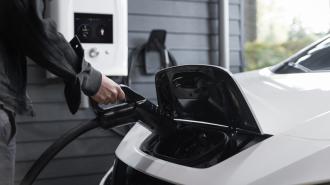Electric vehicles (EVs) are the future of transport, but only if we can generate enough energy to power them all.
Researchers at Stanford University have found that current charging habits for electric vehicles (EVs) will be unsustainable for the electric grid if adaptations aren’t made before net-zero goals for EVs are met.
There are currently around 16.5 million electric vehicles on the world’s roads, according to the International Energy Agency. In a net zero emissions by 2050 scenario, this would rise to 300 million by 2030, it says.
EVs of all types are already displacing 1.5 million barrels per day of oil usage, equivalent to about 3% of total road fuel demand.
The Stanford study points out that since charging electric vehicles takes time using conventional chargers, owners tend to leave their cars charging in the evenings and overnight, putting added pressure on the grid. Demand peaks between 5-9 pm as people return home from work and use electric appliances like televisions and kettles.
If vehicle owners were to charge them during the day, this could cut costs and help the grid as the number of electric vehicles increase to meet sustainable goals, the authors say.
Major investment needed for electric vehicles
Focusing on the entire Western US region, the researchers found that “when the penetration hits 30% to 40% of cars on the road, the grid will experience significant stress without major investments and changes in charging habits”.
In this scenario, they said that peak net electricity demand increases by up to 25% with forecast adoption and by 50% in a stress test with full electrification.
“We encourage policymakers to consider utility rates that encourage day charging and incentivize investment in charging infrastructure to shift drivers from home to work for charging,” said the study’s co-senior author, Ram Rajagopal, an associate professor of civil and environmental engineering at Stanford.
Using their model for charging demand, the team was able to study the charging behaviours of residents across 11 Western States and how these might impact an electricity grid.
As well as easing pressure on the grid, the researchers found that daytime charging would also reduce greenhouse gas emissions. In California, for example, excess electricity is produced during late mornings and early afternoons, mainly because of solar capacity. If most electric vehicles were to charge during these times, then the cheap power from solar could be used instead of wasted, according to the report.
Many regions are investing heavily in solar energy. In Europe, for example, the EU’s new solar energy strategy envisions solar panels on all residential roofs throughout Europe as of 2029, according to the REPowerEU plan. Using this daytime power will be imperative as the world shifts to renewable energy.
Profound implications for the grid
“The findings from this paper have two profound implications: the first is that the price signals are not aligned with what would be best for the grid – and ratepayers. The second is that it calls for considering investments in charging infrastructure for where people work,” said Ines Azevedo, the paper’s other co-senior author and associate professor of energy science and engineering at the Stanford Doerr School of Sustainability.
Smart technology that empowers the consumer will be key to providing flexible, resilient and sustainable energy, the World Economic Forum says in its 2021 report ‘Getting to Net Zero: Increasing Clean Electrification by Empowering Demand’. The authors highlight the future role of vehicle-to-grid (V2G) charging, for example, which allows the bi-directional flow of energy between electric vehicles and the grid, and back again.
“V2G will augment the capacity of the power grid during peak demand hours (peak shaving), relieve local congestion and hedge for power intermittency. It will also help to reduce the total cost of ownership for EV drivers, by enabling owners to sell excess battery energy back to the grid.”
This article was reprinted with permission of the World Economic Forum, where it was originally published.
